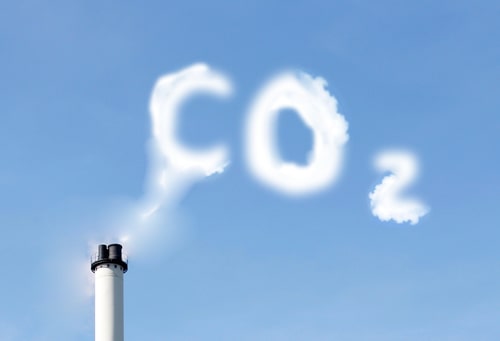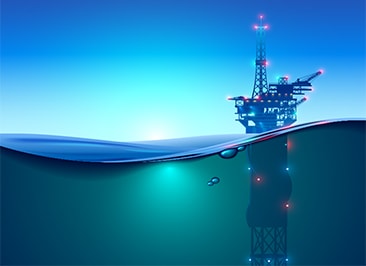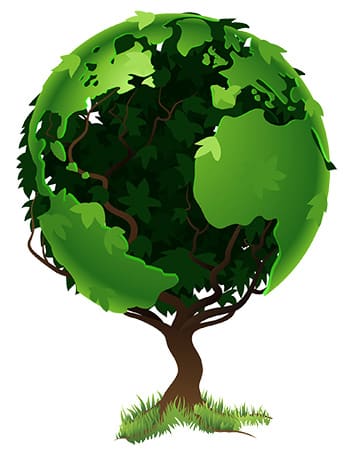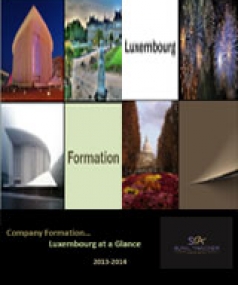Respiratory Laws and Regulations in the United Arab Emirates
 The United Nations Environment Programme (UNEP) celebrates June 5, 2019 as World Environment Day. Interestingly, the theme of this year’s World Environment Day was “Air Pollution”. The day is significant as the UN body attempts to draw the world’s attention towards the imminent danger posed the air pollution and resultant effect on human health especially the detrimental effect on the respiratory system as it is direct need of air which affects our health crucially. The news published in leading newspapers all over the United Arab Emirates at different time have pointed to the spiralling level of air pollution due to increase in number of cars, energy production as the anthropogenic cause and sea salt and dust particle as natural cause. In fact, Greenpeace the world-renowned environment non-governmental organization (NGO) has claimed Dubai as one among the 50 global hot spots for the high nitrogen oxides. Elevated levels of air pollutants such carbon monoxide, silica, nitrogen dioxide, tropospheric ozone, methane, in the air are the causative agents for damage to the respiratory tract, exposing the people to vulnerability of asthma, cancer and in long-term could cause chronic lung disease.
The United Nations Environment Programme (UNEP) celebrates June 5, 2019 as World Environment Day. Interestingly, the theme of this year’s World Environment Day was “Air Pollution”. The day is significant as the UN body attempts to draw the world’s attention towards the imminent danger posed the air pollution and resultant effect on human health especially the detrimental effect on the respiratory system as it is direct need of air which affects our health crucially. The news published in leading newspapers all over the United Arab Emirates at different time have pointed to the spiralling level of air pollution due to increase in number of cars, energy production as the anthropogenic cause and sea salt and dust particle as natural cause. In fact, Greenpeace the world-renowned environment non-governmental organization (NGO) has claimed Dubai as one among the 50 global hot spots for the high nitrogen oxides. Elevated levels of air pollutants such carbon monoxide, silica, nitrogen dioxide, tropospheric ozone, methane, in the air are the causative agents for damage to the respiratory tract, exposing the people to vulnerability of asthma, cancer and in long-term could cause chronic lung disease.
Federal Law Number 24 of 1999 on the Protection and Development of the Environment defines “Air Pollution” as any detrimental and undesirable change in the quality of the open air at work locations, closed as well as semi-closed civic areas thereby harming the health of humans and the environment, by natural factors or anthropogenic activities.
Though this article focuses on the legal perspective of protecting the respiratory system of people, it is important to know a bit of science behind the why what and how of air pollution and the precipitating agents of it and the causes. The causes of air pollution which cause respiratory problems are:
- Transportation/vehicular emissions
- Shipping
- Power generation and distribution
- Seawater desalination
- Construction activities
- Maritime activities-shipping, patrolling vessels
- Oil and gas activities
- Manufacturing industries-mineral mining, etc.
- Sandstorms, mineral dust and salt water evaporation
The pollutants that are released from the abovementioned activities are:
- Sulphur dioxide (SO2):
Sulphur dioxide (SO2) exists as a gaseous pollutant that is mainly emitted from fuel combustion from the transportation sector, electricity production, facility for water desalination and oil and gas extraction.
- Carbon monoxide (CO):
Carbon monoxide (CO) is a pollutant which is generated by partial internal combustion engines and smoking cigarettes.
- Nitrogen dioxide (NO2):
Nitrogen dioxide (NO2) is a gas that has its reservoir in the atmosphere. It is a pollutant mainly emitted during fuel combustion.
- Ozone (O3)
Tropospheric ozone (O3), known as ‘ground-level ozone’, is a secondary pollutant, which is not emitted due to natural or human interference. It is formed in the upper troposphere due to photochemical reactions in the sunlight and primary pollutants viz. the nitrogen oxide (NOX) and volatile organic compounds (VOCs).
- Particulate Matter (PM10)
A particulate matter which is less than 10 μm in diameter (PM10) is composed of small solid or liquid particles which float in air. They can arise from nature such as sand from the desert or from human sources e.g. combustion engines or formed in the atmosphere when gaseous pollutants such as SO2 and NOX react.
- Hydrogen Sulphide (H2S)
Hydrogen sulphide (H2S) gas has an odour of rotten eggs and causes odour nuisance at very low concentrations. Hydrogen sulphide is not categorically a ‘criteria pollutant’ in the UAE. The main
emission sources for this are dumping of solid waste, emissions from sewage systems, wastewater plants as well as oil and gas activities.
These pollutants are just deleterious to the environment as they cause:
- Acid deposition by NOX and SOX, impacts buildings, water bodies, forests and wildlife.
- Eutrophication of water bodies stimulate algal blooms and kill fish and plants.
- Tropospheric ozone, which damages vegetation.
- Negative impacts on wildlife caused by air pollutants.
- Short-lived climate pollutants which contribute to climate change.
- Affects the agricultural production
- Reduces photosynthesis
- Reduces plant ability to sequester carbon
- Reducing the health and productivity of crops
but they have a compoundable effect on human health and especially the respiratory system:
- Headache and anxiety (SO2)
- Impacts on the central nervous system (PM)
- Irritation of eyes, nose and throat
- Breathing problems (O3, PM, NO2, SO2)
- Effect on the respiratory system is manifested as infections, irritation, besides inflammation.
- reduced lung function as well as asthma
- Lung cancer
- Chronic obstructive pulmonary disease
- Effect over the reproductive system.
- Effect over liver, spleen and blood.
- Poor air quality impacts the socio-economic wellbeing of the public in the Emirates.
In fact, as documented by Ministry of Climate Change and Environment on its official website about the impact of air pollution especially by PM 2.5 on the respiration system as follows:
- Congestive heart failure
- Lung cancer
- Chronic Bronchitis
- Asthma
- Scarred lung tissue
- Emphysema
- Low birth weight
In order to redress the above problems, the UAE Government has adopted many measures such as:
1. Ambient Air Quality Standards and Index adopted by Ministry of Environment and Water,
 UAE environment is mainly desert land with a long coastal line, also the wind current that changes frequently and seasonally causes harsh and arid climate. These factors affect air quality. Therefore, it is vital to keep a check on air quality caused due to anthropogenic activities.
UAE environment is mainly desert land with a long coastal line, also the wind current that changes frequently and seasonally causes harsh and arid climate. These factors affect air quality. Therefore, it is vital to keep a check on air quality caused due to anthropogenic activities.
The quality of the air in the UAE is scrutinized by high-quality monitoring stations which conforms to the specifications approved by the European Union and the US Environmental Protection Agency. Currently, there are 41 stations across UAE.
2. Federal Law Number 24 of 1999 on the Protection and Development of Environment: Protection of air from pollution
- Article 48 The establishments, in the exercise of their activities, shall ensure that pollutants leaking into the air do not exceed the maximum permissible limits specified by the implementing regulations13
- Article 49 The use of machines, engines or vehicles producing exhaust residues exceeding the limits provided for in the implementing regulations shall not be allowed.
- Article 50 It lays down prohibition pertaining to throw or burn solid garbage and wastes except in places designated for such purpose, located far from residential, industrial and agricultural areas as well as the aquatic environment. The implementing regulations shall determine the specifications, restrictions and minimum distance between the places designated for such purpose and said areas.
- Article 51 It is prohibited to apply pesticides or other chemicals for agricultural purposes, public health requirements or any other purpose except by abiding by the conditions, restrictions and guarantees set by the implementing regulations which guarantee that human beings, animals, plants, watercourses or any other environmental components are not exposed to the adverse
- effects of such pesticides or chemical compounds whether directly or indirectly, presently or in the future.
- Article 79 lays punishment for the breach of Article 49 shall be sentenced to a fine amounting to one thousand Dirhams (Dh. 1,000) at least.
- Article 80 for breach of article 51 hereof shall be sentenced to a fine amounting to ten thousand Dirhams (Dh. 10,000) at least and fifty thousand Dirhams (Dh. 50.000) at most.
- Article 82 lays down that whoever shall breach a provision of Article 48 and 50 would be sentenced to fine of Dh.2000 to maximum Dh.20,000
3. Department of Planning and Development Ports, Customs, Free Zone Authority, Government of Dubai: Regulation Cs - 5.0: Construction Safety Regulations for Environmental Nuisance
Construction works have to be undertaken in a manner that air quality isn’t impacted and doesn’t cause environmental nuisance.
Dust control is vital near residential areas. Dubai is vulnerable to dust storms frequently. Dust generation is mainly due to construction activities such as uncovered loose materials, agitating ground sediments, earthmoving, demolition of buildings, concrete cutting or grinding, blasting, and concrete batching plants.
The management techniques laid down in the Manual says that the contractor must adopt the following measures (as appropriate) to prevent the generation of dust:
- Draft and implementation of a dust management plan.
- Application of water sprays over stockpiles.
- Covering the loaded trucks with such loose sediments.
- Protect on-site the materials and their exposure to wind and the weather elements.
- Perimeter fencing to minimize the impact of dust on the public areas.
- Machines with internal combustion engines must be properly serviced to prevent the emission of excessive pollutants or noise.
- Exhausts and ductwork from the chimneys and plants must be located away from windows and public areas.
- Materials can only be processed in certain designated zones away from boundaries and public areas, with dust as well as noise control/ suppression. In case of in situ cutting, dust suppression measures must be used.
- Attempt to minimize ground area disturbance.
- Avoid non-critical earthworks on windy days.
- All loads of sand, aggregate or dry waste transported from the site must be covered.
- Stockpile the loose material in sheltered areas.
- Wetting of the roads and surfaces must be done in a manner that there is no run-off.
- Application of the “stabilizers” to be mixed with the water for a spray so to reduce the dust.
- Routine clean of the entry/exit roads and major traffic thoroughfares on site.
- fencing with gauze to reduce wind erosion.
4. Cabinet Decree (12) of 2006 Regarding Regulation concerning Protection of Air from Pollution
- Article (12) All Authorities and Facilities must ensure enough ventilation inside the sites of work, necessary precautions as well as steps to retard the emission of air pollutants.
- Article (4) All Authorities and Facilities shall take into account, during the combustion of any sort of hydrocarbon fuels Certain tools and equipment shall be used for the control of air pollution to reduce emissions, provided that such tools and equipment are in compliance with the techniques of control and Cleaner Production.
- Article (3) Car and Vehicle emissions may not exceed the maximum allowable limits specified
- Article (2) All facilities shall not exceed the maximum allowable limits specified in annex (1) attached hereto regarding the emission or the leakage of the Gaseous and Solid Pollutants and vapours to the ambient air.
- Article (13) All Closed and Semi-closed Public Places must satisfy enough means of ventilation, that suit the size of the place, its capacity, and the type of activity practised in it, to ensure the renewal of air, its freshness, and appropriate temperature.
5. Abu Dhabi Framework Code of Practice 2.0 for occupational safety and health system: Personal Protective Equipment
- Wherever an employee is subject to the airborne contaminants in excess of the threshold values mentioned, it is the prime duty of the employer to provide respiratory protection equipment to the employees.
- Employers shall establish a written Respiratory Protection Programme which requires site-specific procedures.
- The employer shall designate a person who is a competent person and train him to supervise and administer Respiratory Protection Programme.
6. Government of Dubai: Personal Protective Equipment for Respiratory Protection
- This guideline was issued by the government in pursuance of Local Order No. 61 of 1991.
- All the employers of designated industries have to provide free of cost equipment for respiratory protection of employees.
- It shall be the responsibility of the employer and supervisor to provide proper selection, maintenance, training and use of the respiratory protective equipment
- The guidelines also mention three types of respiratory protective devices viz. air purifying devices, air-supplied respirators, self-contained breathing apparatus.
 In conclusion, as seen from the foregoing session that UAE at Federal level as well as at Emirates level have adopted rules, regulations, code of conduct for different industries to protect air and save the people from resultant air pollution. As in the UAE, air quality is one of the priority issues mentioned in the UAE National Vision 2021 agenda. The agenda aims to raise/improve the air quality from its present/current level to approximately 90% by 2021.
In conclusion, as seen from the foregoing session that UAE at Federal level as well as at Emirates level have adopted rules, regulations, code of conduct for different industries to protect air and save the people from resultant air pollution. As in the UAE, air quality is one of the priority issues mentioned in the UAE National Vision 2021 agenda. The agenda aims to raise/improve the air quality from its present/current level to approximately 90% by 2021.
To attain this objective, the Ministry of Climate Change and Environment (MoCCE) is working in tandem with its partners in a public-private partnership through means such as the use of state-of-the-art systems and techniques and the adoption of best practices. These include steps to develop and enhance the national standards for air pollution and strict compliance control, the transition to a clean and green
economy, promote public transport rather than private one and development of artificial intelligence to detect the changes in air quality. UAE, as a nascent step, has started investing in solar-power projects viz. the Mohammed Bin Rashid Al Maktoum Solar Park, which is hyped to be the largest solar power park in the world. Further, Dubai aims to produce 75% of its energy demand from clean sources by 2050.
 English
English
 عربي
عربي Русский
Русский 官话
官话 português
português
 Türk
Türk 




